This post is not intended to be a comprehensive outline of everything you need to know when travelling in China. Instead, it’s aim is to share some of our findings from our recent trip, to help you get around in Beijing and China both conveniently and cheaply.
Getting from the Airport
The train from the airport takes you to Dongzhimen subway station and costs 28 yuan (less than £4 per person). Although you will save time, a cab cost just 85 (slightly over £10) yuan. This avoided the pain of finding a cab at the subway station in Beijing, and dragging our cases up and down escalators on the subway.
Personally, I think it’s worth it for the added convenience, especially when there is more than one person travelling. Please note, traffic in Beijing can be absolutely horrific. If you travel at any time other than early in the day or late in the evening, you will need to allow much more time for your journey than you might expect.
For instance, at 2pm on a Saturday in early September, it took 50 minutes to drive around 6 miles from Beijing West Railway Station to our hotel. At 7am on Sunday morning, our journey from the business district to the airport (around 28km) took only 25 minutes.
Getting around in Beijing
There are many options for getting around Beijing, all of which are reasonably priced.
Taxis
The most obvious is to take a taxi. Whilst they are cheap, I highly recommend you do not rely on this mode of transport. You will spend a lot of time stuck in traffic and miss out on witnessing Chinese culture.
They are however useful for journeys with lots of bags, and for days when your feet simply cannot take any more pain. We were walking on average around 11 miles a day, so this was not uncommon for us.
We paid 65 yuan (around £8) for a 40-minute journey in rush hour and less than £2 for a 3-mile journey to Sanlitun for drinks. The only downside is that you may struggle to flag one down on the street, but you can ask your hotel to call a cab if that’s your start point.
Subway
The subway is great value. There are 21 lines and navigation is straightforward. Lines are colour coded and station names are printed in English and Mandarin.
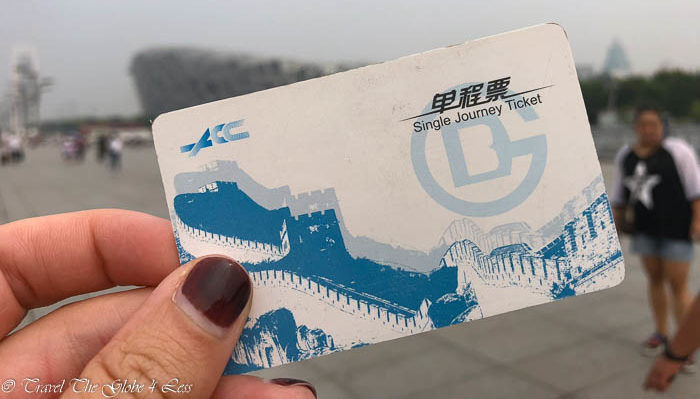
For our first trip, we asked our hotel concierge to write down the name of the station we wanted in Mandarin. As we soon discovered, this really wasn’t necessary. In addition to the bilingual signage, screens on each train show you the start destination, the end destination and the next stop. Screens in the station also advise the time until the next arrival in both languages.
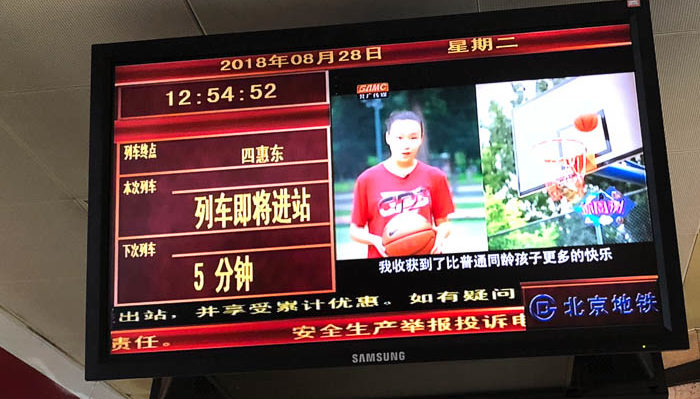
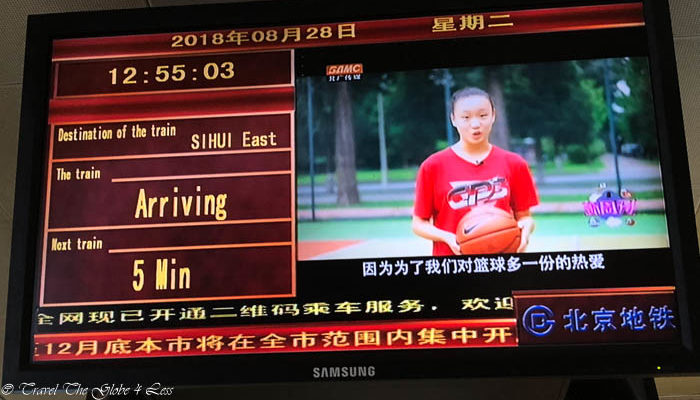
The distance of your journey determines the fare and the self-service machines allow you to select your destination in English. The most we paid was 4 yuan, but some journeys cost just 3 yuan. Even paying for two, this works out cheaper than a taxi and is considerably more fascinating.
Riding the subway is a pretty cool experience, with air-conditioned trains, safety doors in all stations and electronic advertising in the tunnels. The only downside is that you will need to frequently change lines as some of the routes are not especially direct. This can be time consuming and add considerable footfall to your journey.
I highly recommend you download the Beijing Metroman app BEFORE you travel (if you have an Android phone you will be unable to download it once in China. How to cope with independent travel in China explains why). This app provides maps, search facilities, and a subway plan. Do not rely on the plans from your hotel as they may be black and white and small scale.
You will also need a good guide. We used Lonely Planet which you can purchase directly from the Lonely Planet Online Shop. Alternatively, check out options on Amazon as local tourist information is scarce.
Bicycle
Now, if you are the adventurous type, you might like the idea of hiring a bicycle. This is a super cheap way to get around the city, but you will need to download the apps before arriving in China if you have an Android phone.
There’s a ton of different bike hire companies in Beijing, but the most common is Ofo bike. Literally every spare bit of pavement seems rammed with this bright yellow bikes!
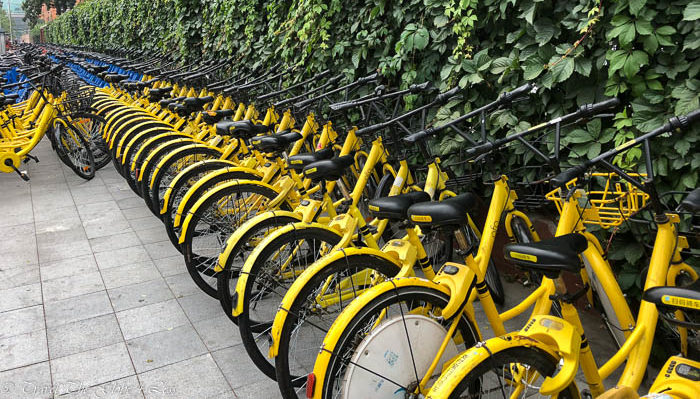
Here’s how Ofo bike works:
First download the app to qualify for one free ride. To access a bike, you simply open the app and scan the QR code above the rear tyre. You need to have an internet connection to be able to successfully read the QR code. This then unlocks your bike and starts your bike hire.
In Beijing, the first hour is free and thereafter rental costs 1 yuan per hour with a maximum cost of 10 yuan per day. This is little more than a £1 and seems like a complete steal!
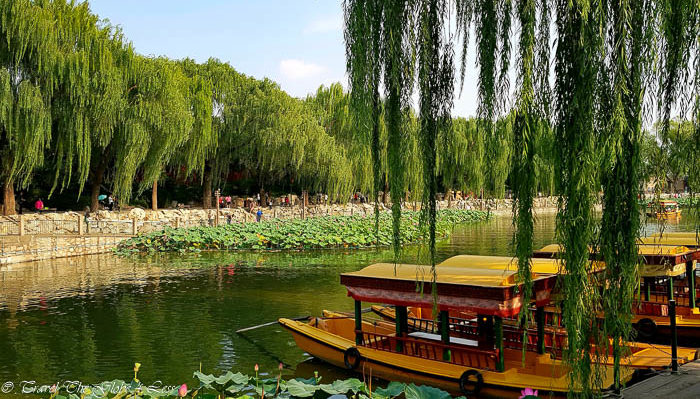
Of course, the downside is figuring out how to cycle in Beijing without getting killed. There does seem to be weird order to the chaos however. Bikes navigate unhindered into tiny gaps and cars somehow avoid them.
Walking
Obviously, your cheapest option is walking and in Beijing it’s likely you will do a lot of this. Distances between subways can be far, and attractions are widespread.
The Chinese authorities also seem to love funnelling people through long, torturous routes whilst blocking the most direct route.
How to get around China
I was surprised by how expensive both trains and flights were in China. A few internal flights cost the same as my international flights. Budget airlines do not appear to have arrived on the scene yet.
We didn’t travel extensively on this trip but can share our experience of two train journeys. We took a delightful overnight train journey and a high speed train journey during the day. Both were very impressive and fascinating!
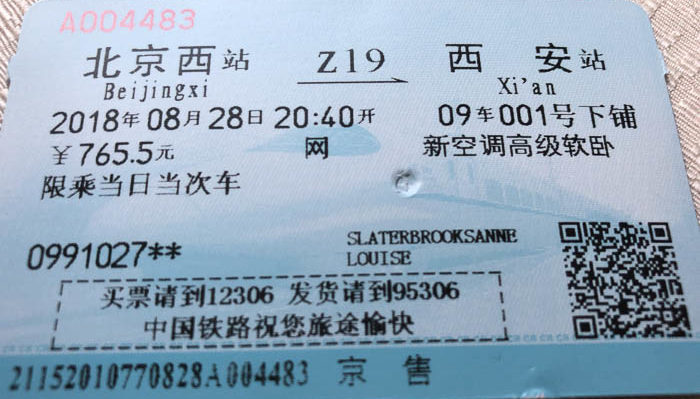
Overnight train from Beijing to Xi’an
We booked our trains from the Uk with China Highlights. I would highly recommend this company as they provided fantastic instructions which explained how to pick up our tickets. This is quite a bureaucratic process and you must pick tickets up in person.
You need to allow plenty of time to collect the tickets. I’d suggest two to three hours, as your overnight train will start to board around 40 minutes before departure. Chinese train stations operate more akin to an airport in the UK with screening and check in. Here’s a breakdown of what you need to do before your journey.
1. Clear security to the ticket hall
2. Find the correct ticket window to collect your tickets.
3. Pick up your tickets. You will need photo ID to book and pick up your tickets.
4. Exit the ticket hall
5. Clear security to enter the station
6. Find the correct waiting area in the station (which is huge in Beijing)
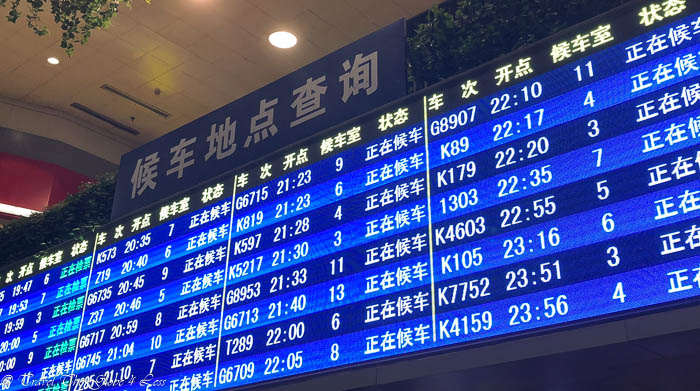
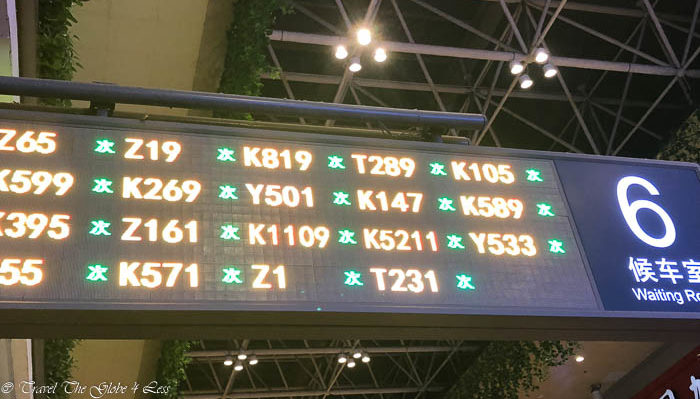
7. Purchase any snacks and drinks (note the overnight train has a trolley but it is best to bring everything you need)
8. Check in for your train.
It sounds complicated, but with the China Highlights instructions it was much easier than I expected. Their instructions provided useful pictures and key phrases in Mandarin to help you locate the various areas.
I made much use of these and a policeman personally escorted me to our ticket collection area. Without the instructions, I suspect I would still be wandering around the station.
Overnight train experience
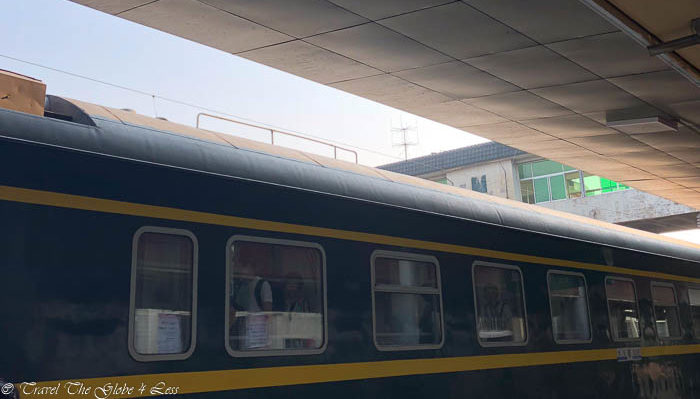
I loved our overnight train. Thanks to great insight from the man at Seat 61, we booked a two-berth sleeper to Xian. It included a compact seating area, TVs for each bunk, air conditioning and en-suite. I wouldn’t say it was luxurious (it certainly didn’t threaten the Orient Express) however compared to our overnight train experiences in Vietnam and Myanmar, it was superb.
The beds were hard but the carriage was quiet (other than the sound of the train on the rails). Each car has a guard to wake you ninety minutes before arrival. The train was extremely punctual, saved the cost of a night’s hotel room and was an exciting way to travel.
Incidentally, we stayed at the Renaissance Wanfujing in Beijing. It was well positioned for the main sites, with overseized beds and a ultra cool lobby.
High speed train experience
Our return journey from Xian was by high speed train. These trains are as fast as the Japanese bullet train, extremely comfortable and highly impressive. Between 2008 and 2011, the Chinese government invested heavily in high speed railways to connect major cities. These trains travel at speeds in excess of 300km on elevated railway lines and are extremely efficient.
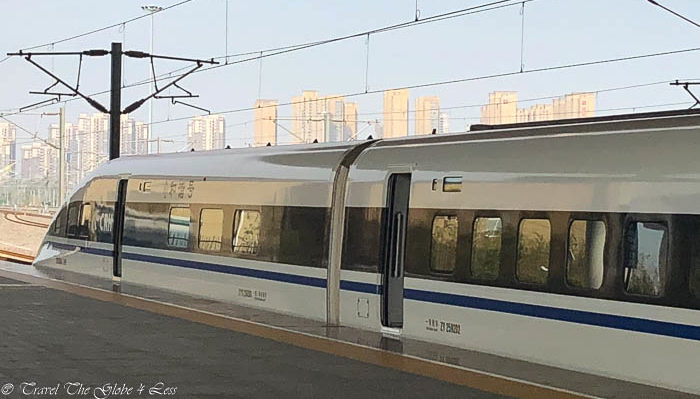
In Xian, trains depart from Beijing North, a custom-built station where high speed trains line up on multiple platforms. The terminal is more akin to an airport and you will need to pass through security to enter. Strangely, aerosols are banned so we had to remove these items from our luggage.
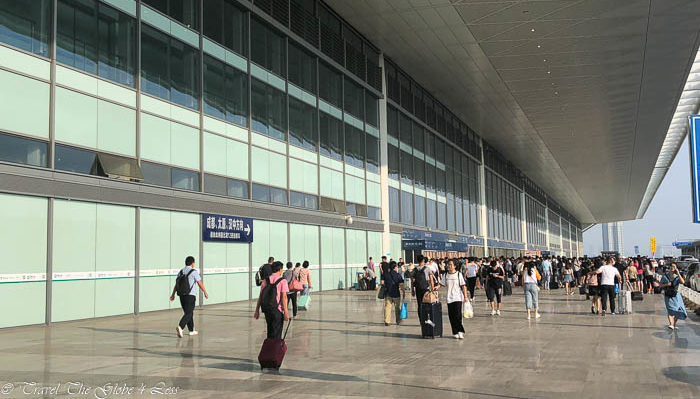
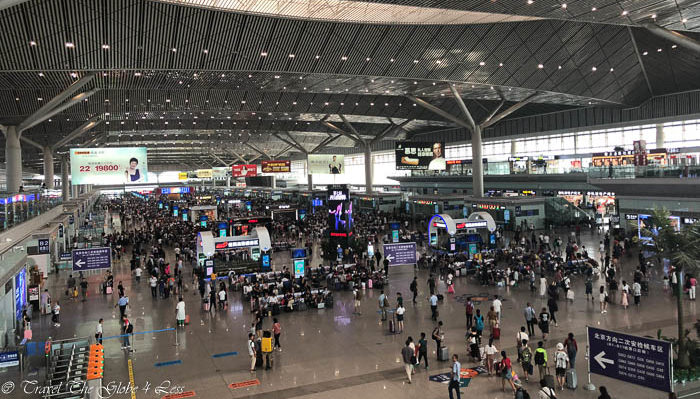
Ticket costs are higher than tickets for the overnight train, as we paid $125 each for the 4 hours 50 journey in first class. This class has rows of four seats all forward facing. The seats are extra wide and comfortable with generous leg space, an in-arm table, footrest and recliner. Tickets include a snack pack and free drink, along with an electric socket. The charging point is not UK compatible so remember to bring an adapter. The only downside on the trains is that storage is limited.
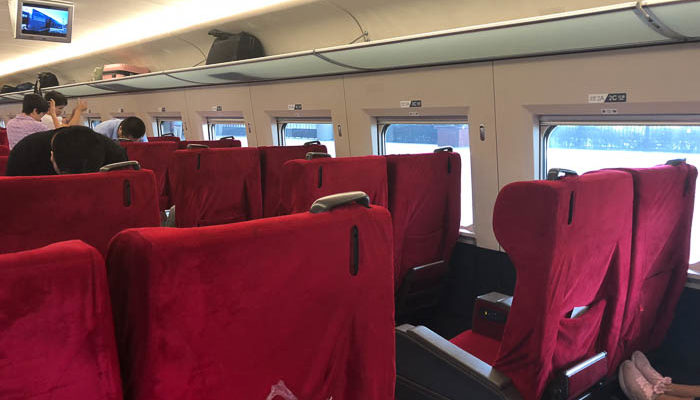

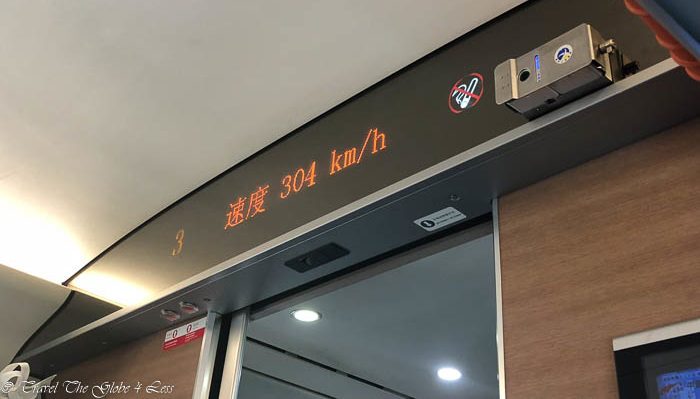
The journey was very pleasant and a great way to the Chinese countryside. Sadly, rural areas offer pleasant views of arable farming land, but Chinese town planning leaves much to be desired. Many urban areas are clearly experiencing rapid growth, and huge partially completed tower blocks rise like sentries in every city. The Chinese know how to do ‘ugly’ town planning on an extraordinary scale.
How easy is travelling in China?
It was much easier than I expected to get around in China. With a little planning you should be fine. Dare to DIY your travel and I guaranteed you will enjoy the experience.
 From Miles to Smiles Stylish travel for professionals seeking luxury at affordable prices
From Miles to Smiles Stylish travel for professionals seeking luxury at affordable prices



Fantastic and useful information, thanks, Anne. Quite intrigued about the issues with Android devices in China, but that link appears broken in the article?
Thanks for letting me know Simon. Will get that updated
Sounds like you had a fabulous time, thanks for sharing your tips.
I’m intrigued about the issues with Android devices! Sadly, the link doesn’t appear to be working 🤔
Thanks will change the link when I get a chance